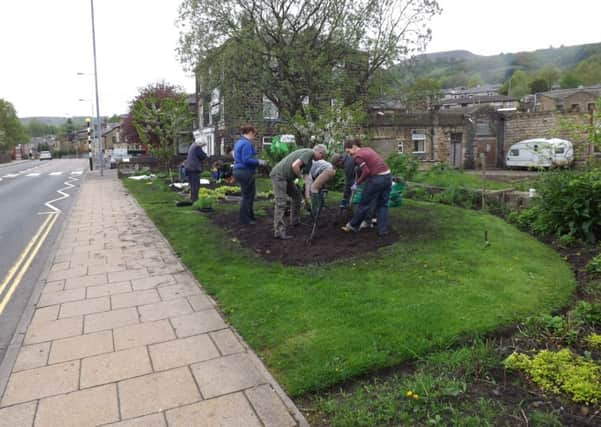Getting to the root of the ‘grow your own’ renaissance


HOW would you feel if a piece of disused land or a neglected urban space, like a grass verge or roundabout, was suddenly turned into a productive veg patch, or pretty flower field?
On the face of it this sounds like a no-brainer, but according to a recent study by university professor Peter Larkham, not everyone takes kindly to guerrilla gardeners cultivating land that they often don’t have the legal right to use.
Advertisement
Hide AdAdvertisement
Hide AdProfessor Larkham has now written a book, Informal Urban Agriculture: The Secret Lives Of Guerrilla Gardeners, in collaboration with his former PhD student Mike Hardman, in which they interview and observe groups of gardeners in the Midlands, where a lively community has formed in recent years.
Professor Larkham, associate head of Birmingham City University’s School of the Built Environment, says: “Guerrilla gardening is an international phenomenon. Those involved take part for a number of reasons, from brightening up their neighbourhoods to using gardening as a form of political protest. The land they are targeting is quite varied. It seem to range from traffic roundabouts and roadside grass verges to derelict sites, unused patches of land which are clearly in somebody’s ownership but aren’t in any sort of productive use.”
He says it is not known how many guerrilla gardeners there are in this country - or how much land they cultivate - partly because the practice is illegal and partly because land ownership is so fragmented. But it has changed with social media helping individuals to form small groups.
But the reaction of landowners to these guerrilla gardeners is usually negative. “They don’t like their land being interfered with. What the guerrillas do can be quite varied. Some of them just want places to look a little nicer, so they just scatter flower seeds. Others go on to the land and clear it, cultivate it and grow either flowers or productive crops. It’s the trespass which landowners don’t like.”
Advertisement
Hide AdAdvertisement
Hide AdHowever, it has brought some communities closer together. “Look around our towns and cities and there’s a massive amount of unused land which could be used. Do these people start looking for land they could cultivate legally? I suspect that’s the future, that guerrilla gardening is part of a wider urban agriculture movement.”
The research found that the impact of guerrilla gardening on communities was mixed. “A small number were negative. They weren’t consulted. They felt aggrieved that it was being done on land adjacent to their property. But the majority were very supportive. They could see the change being positive, the land being used, being looked after a bit more.”
There are some areas where it has really taken root and brought together the community, none more so than Todmorden, in West Yorkshire. “A small-scale guerrilla gardening movement was looking to make prettier what was a small industrial town. That grabbed everybody’s consciousness and the movement took off, legal sites were found and it’s really at the forefront of a legal urban agriculture movement which now comes under the label ‘Incredible Edible Todmorden’.
“It’s made a significant difference, particularly in summer when the plants and the crops are much more visible. The place is greener, more interesting and is helping a lot in building a community response as to what sort of opportunity we can make of derelict patches of land.
Advertisement
Hide AdAdvertisement
Hide Ad“When the council found it was a positive thing rather than purely a case of illegal trespass, they got behind it. Other places are supporting legal urban agriculture. A lot of local authorities are taking notice, partly because of concern for food security and also because of big agendas for health and wellbeing.”